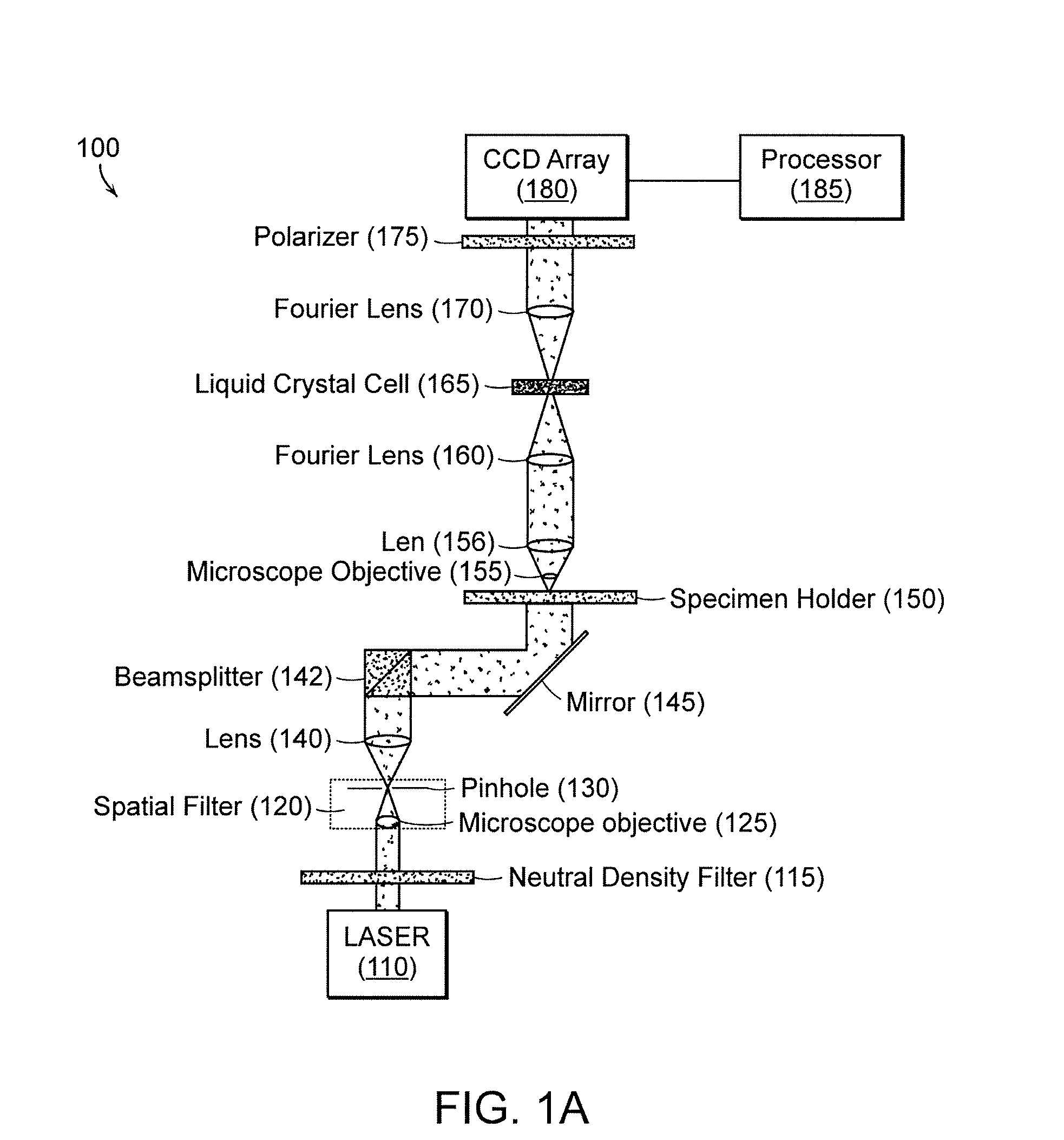Systems and methods of all-optical Fourier phase contrast imaging using dye doped liquid crystals
a dye-doped liquid crystal and phase contrast technology, applied in the field of phase contrast microscopy, can solve the problems of destructive interference, inability to capture the image with an ordinary camera, and difficulty in seeing with the naked eye, and achieve the effect of reducing intensity
- Summary
- Abstract
- Description
- Claims
- Application Information
AI Technical Summary
Benefits of technology
Problems solved by technology
Method used
Image
Examples
Embodiment Construction
[0038]Embodiments of the invention are directed to systems and methods of all-optical Fourier phase contrast imaging using a low power coherent source (laser) and dye-doped liquid crystals. In general, the Fourier spectrum of an object contains low spatial frequencies at the center of the spectrum, with high intensities, while high spatial frequencies are on the edges, with lower intensities. The laser source provides precise separation of these frequency regimes through an all-optical Fourier transform. In some embodiments, high monochromaticity of the coherent source facilitates a well defined Fourier plane in which different spatial frequency bands are clearly resolved. In addition the intensity of the laser source makes object features bright and clearly visible. Some embodiments provide bright-field, positive phase contrast and negative phase contrast images of “phase objects,” i.e., objects that are at least partially optically transparent and thus are difficult to image using...
PUM
| Property | Measurement | Unit |
|---|---|---|
| wavelength | aaaaa | aaaaa |
| path length | aaaaa | aaaaa |
| phase contrast imaging | aaaaa | aaaaa |
Abstract
Description
Claims
Application Information
 Login to View More
Login to View More - R&D
- Intellectual Property
- Life Sciences
- Materials
- Tech Scout
- Unparalleled Data Quality
- Higher Quality Content
- 60% Fewer Hallucinations
Browse by: Latest US Patents, China's latest patents, Technical Efficacy Thesaurus, Application Domain, Technology Topic, Popular Technical Reports.
© 2025 PatSnap. All rights reserved.Legal|Privacy policy|Modern Slavery Act Transparency Statement|Sitemap|About US| Contact US: help@patsnap.com



